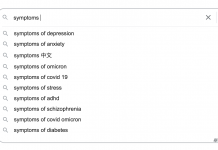Owners often inject their personality into the ways they design and hide their caches, which can look very different from one another. Caches come in different sizes and shapes, ranging from a tiny magnetic container to a cargo container. In urban areas, caches are usually in smaller containers so they are easier to hide. In the countryside, caches tend to be bigger and contain more contents. They are usually lunch boxes or DIY containers.
Apart from a logbook or logsheet for geocachers to record their visits and feelings, larger caches might contain any number of valuable and not so valuable items such as figures, coins and stamps. These items turn geocaching into a real treasure hunt as a geocacher never knows what the owner or other visitors to the cache may have left there for the next person to enjoy.
Quite often, geocachers may also find a “Trackable”. A Trackable has to move from one geocache to another. Sometimes Trackables may have special requests, for example “I want to jump to Japan!” Each Trackable has a unique code the finder can use to log its travels online.
Arius Saniel, a geocacher from the Philippines who works as a hardware engineer for Oracle in Shenzhen, makes all his caches magnetic. His containers are usually small and well-camouflaged, with a log sheet inside.
King Lee Wan-wai, the other young man from the Ng Fan Chau trip is also a member of the local geocaching community. He first came across the term online in 2007 and did some research into it, and “discovered a hidden world parallel to ours”. Lee tried it using a GPS phone and found his first geocache in Melbourne.
He has been hooked ever since.
Engaging in geocaching while travelling is a good way to visit interesting places that are not found in travel books. “It helps me see more of a place or country and get to share them with friends during group hunts,” says Lee.
Lee’s tally so far is 665 finds in 16 countries. One of the most memorable finds was in Rome, where geocaches are hidden in famous places of interest like the Colosseum and the Vatican City. One of the caches is a copy of the famous “Mouth of Truth” carving which is supposed to bite off the hand of those who are not telling the truth. Lee still has both his hands.
Lee loves geocaching so much that he is willing to share his experience with beginners and receives overseas geocachers. “It brings me to places, to see through the eyes of the cache owner and what he was trying to show us, [and I] meet new people from all walks of life,” he says.
Lee also finds that one of geocaching’s rewards is personal growth. “I think geocaching can develop a person’s senses and patience,” he says. “I had a friend who went searching for the same cache 15 times and finally found it. The challenge made him grow in persistence and determination.” He adds that guts, the capacity to think like a detective and the ability to make social contacts are also important aspects of geocaching.
Geocachers often refer to non-geocachers as “Muggles” after the characters without any magical ability in the Harry Potter series. The term is usually used to describe a non-geocacher who looks puzzled after coming across a geocacher searching for a cache, or when a non-geocacher accidentally finds a cache.
Even though geomuggles are mostly harmless, it is the responsibility of geocachers to make sure muggles do not see them with the cache. Otherwise, the cache will be at risk of disappearing.







































